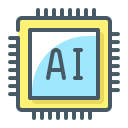Understanding Artificial Intelligence: A Beginner's Guide
Chosen theme: Understanding Artificial Intelligence: A Beginner’s Guide. Start your journey with a warm, plain‑language tour of AI concepts, examples, and hands‑on ideas so you can learn confidently and ask smarter questions. Subscribe and share your first impressions to shape upcoming beginner‑friendly posts.

What Artificial Intelligence Really Means
Traditional software follows rigid rules written by people. AI, especially machine learning, discovers patterns from data and adapts when examples change. Imagine teaching a child to recognize cats by showing many photos rather than writing a checklist of ears, whiskers, and tails.



Neural Networks Without the Jargon
A neural network stacks simple decision units, or neurons, in layers. Each layer extracts features, gradually turning raw data into useful signals. Like sketching, shading, and detailing a drawing, layers add structure step by step until the picture becomes clear enough to label.

Ethics and Responsible AI for Newcomers
If past data underrepresents groups, your model can make unfair decisions. Ask who benefits and who could be harmed. Start with diverse examples, audit outcomes, and document choices. Tell us a scenario you worry about, and we will propose beginner steps to check for bias.
Ethics and Responsible AI for Newcomers
Collect only the information you truly need, store it securely, and explain why you use it. Mask sensitive fields whenever possible. Even a hobby project deserves respectful handling of data. Share your project idea, and we will suggest privacy‑first ways to proceed safely.


Your First AI Project, Step by Step
Pick Tools You Can Learn Fast
Start with Python, notebooks like Google Colab, and scikit‑learn for approachable models. Those tools are free, well documented, and beginner‑friendly. Create a new notebook today, post your goal in the comments, and we will point you to a starter template.
Build a Tiny Spam Classifier
Collect sample emails or messages, label a few as spam or not, then split into training and test sets. Try logistic regression first, then compare with a decision tree. Share your accuracy and confusion matrix, and we will help interpret strengths and weaknesses.
Share, Reflect, Improve
Write a short project readme explaining your data, model, metrics, and next steps. Invite friendly critiques from other beginners. Reflect on what confused you most. That reflection becomes your compass, guiding which chapters of this beginner’s guide we publish next.


AI in the Real World: Stories That Matter
A small clinic used a simple risk model to flag urgent cases sooner. Nurses still made final calls, but AI prioritized patients during busy mornings. That blend of human judgment and machine suggestions saved time and eased stress. What careful collaboration could help in your field?
AI in the Real World: Stories That Matter
A songwriter used an AI lyric assistant to break writer’s block, then edited lines to match personal style. The final chorus felt honest because a human curated every phrase. Tools can spark ideas, not replace voices. Try a creative experiment and tell us what surprised you.
Skills for the AI Era
Treat AI like a helpful colleague that drafts first passes, not a perfect expert. You set goals, review outputs, and decide. That collaboration speeds learning and protects judgment. Share a task you want to co‑pilot, and we will recommend beginner‑friendly approaches.
Skills for the AI Era
Always ask how a model was trained, what data it saw, and how results are measured. Look for trade‑offs and uncertainty. Strong beginners learn to question politely and verify. Post one metric you plan to track, and we will suggest ways to improve its reliability.
